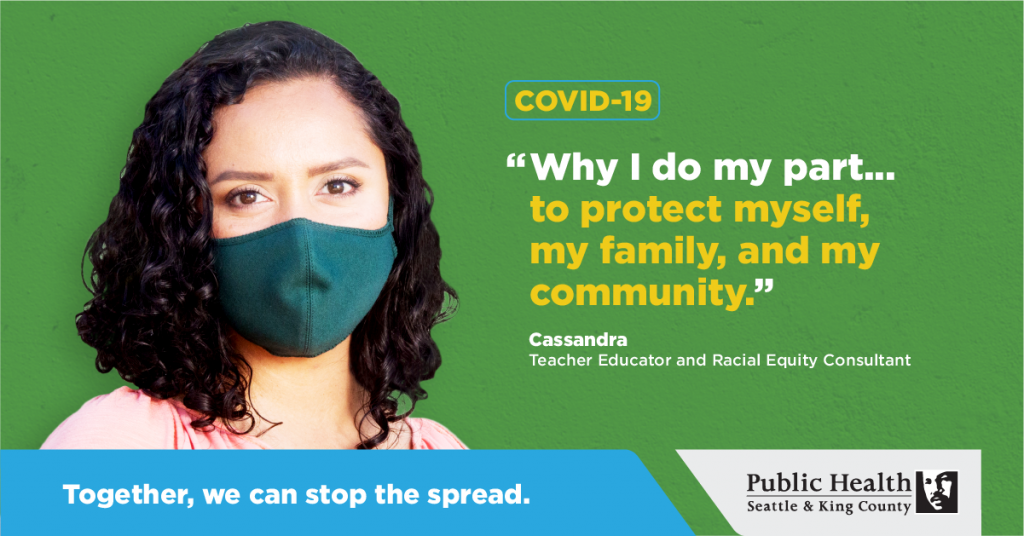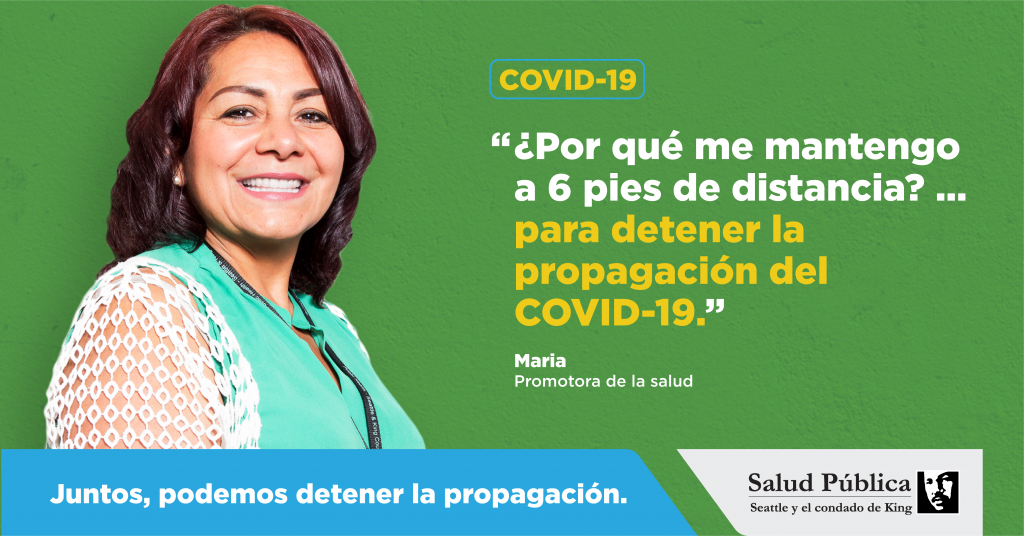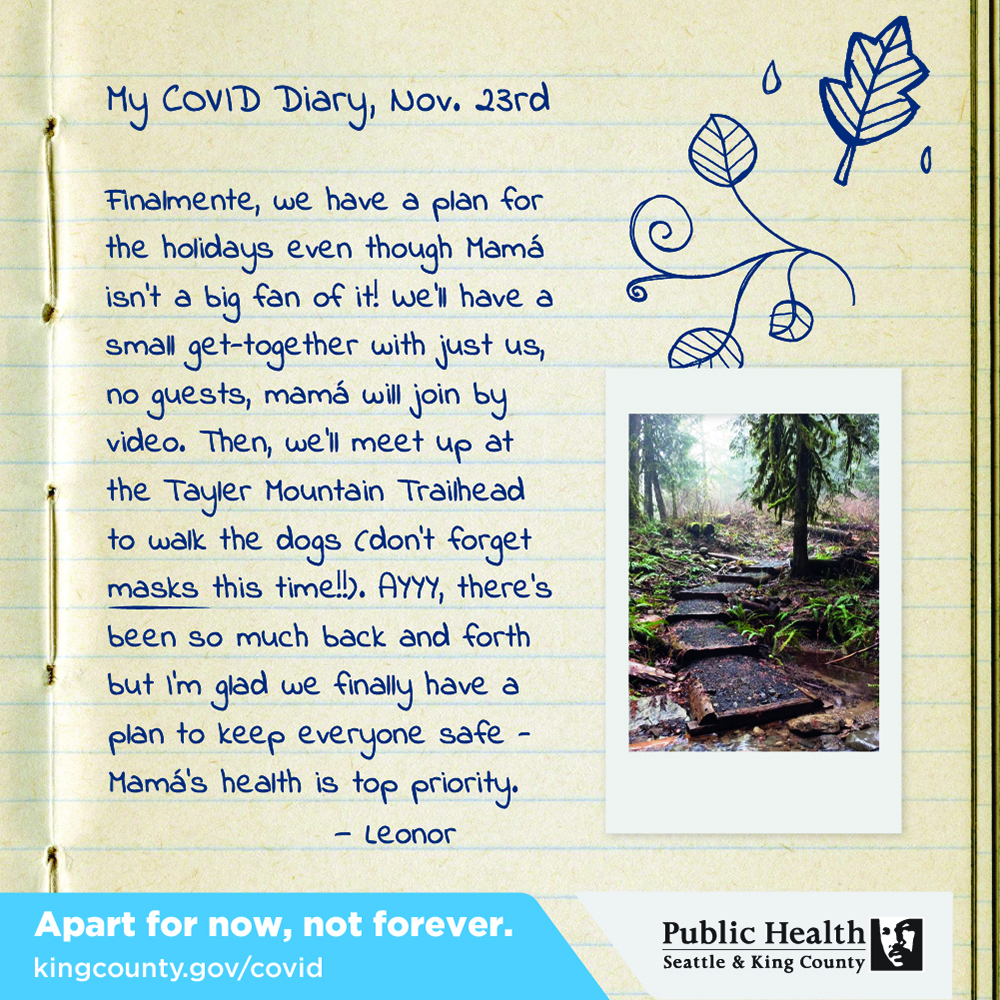
In the fall and winter of 2020, Public Health, Seattle & King County worked with Resource Media to design and implement advertising, social testing and vaccine planning communications work. The goals of the work were various:
- Encourage residents to continue with social distancing given recent rise in COVID rates and with the pending holiday season
- Provide sustainability and analysis to the Public Health social media team, to determine how to best leverage Facebook ad credits and create engaging content into the future
- Drive more traffic to Public Health COVID testing online signup sites
- Plan vaccine communications and outreach for King County’s eastern, rural communities and other residents who are harder to reach
Following is a question and answer session with Sian Wu, Resource Media’s managing director out of the Seattle office, who led this regional COVID work.
Seattle has recently been cited as having lower rates of COVID deaths than any other major city. What role did communications and advertising play in this accomplishment?
Ultimately the governor and public health agencies are responsible for making the tough decisions for the restrictions that were put in place to limit transmission of COVID. We were ground zero for the United States; the first case was discovered here. So our officials really jumped into action, took it seriously, trusted a pandemic playbook and it really showed. The communications supported these policies and decisions, to help ensure that people were actually listening to and following the guidance, and had a reason to do so. There are so many factors for success, and we are definitely not out of the woods yet.
What were some of the factors that made the project unique?
Working on anything COVID is unique from an advertising perspective–it’s an issue that is new in people’s consciousness and yet so dominant in how this affects our daily lives–from how we step out the door to how they work and go to school, dominating the headlines every day. This kind of pervasiveness was an advantage because we didn’t have a challenge explaining relevance. But we had to recognize that different people had different associations and behaviors relating to COVID, and not everyone had access to the same information. This past year has brought to light the severe racism and health inequities that have pervaded our society, and dictated who lives and who dies when a pandemic hits.
What were some of the challenges you encountered?
The need to change constantly in a fast and demanding timeline presented challenges as usual. From the moment you say yes to a project to when you have concepts to present, the reality on the ground will have changed very much when dealing with COVID. So we had to anticipate those changes and make room for them. We did that by creating a creative concept that was a flexible system or ‘container’ for a variety of different messages that could change at any moment. I remember once the governor held a press conference and we said, ‘‘oh we need to change that tagline, to really emphasize that we’re encouraging people to stay home for the holidays,” because gatherings outside the household were not allowed. But we were able to roll with it, thanks to a very responsive team with the County.

What were one or two things you tried that didn’t work?
Earlier on when we were working on implementing advertising and designing new campaigns at the same time, we had a ‘go first’ strategy where we took existing advertising that was created by another firm, and used a portion of our ad buy to promote it to certain multicultural audiences, ‘just to get it out there.’ But that ate big holes in our final ad budget and distractions pulling us away, managing about 3 ad buys at once, and the ad campaign we were designing had less money to promote at the end. We still were able to get a variety of COVID messaging in front of a lot of folks, but it’s hard to tell which general awareness advertising campaigns are going to be effective when you leap in at the beginning.
What were one or two things you tried that seemed to make the biggest difference?
We were focused on multicultural campaigns, so reaching the audiences who faced the biggest barriers to avoiding COVID, and the ones most likely to be severely adversely affected by COVID, like hospitalization, having lost family members or lost income due to the pandemic. So it felt really gratifying to see interviews taking place in communities that went deeper into audiences that often get missed in advertising campaigns. We had partnerships with Voice of South Pacific and Converge Media, to reach Pacific Islander and African American communities, and those were deeper conversations about how to stay safe and solutions to see family and reduce risk.
We also recognized that COVID fatigue is a very real thing, and so developed advertising that sought to empathize with various different challenges, and imbued a voice into profiles that gave you a clue about who these people were. Typically public health advertising tends to be this one authoritative voice, but we tried something a bit different and leaned on the diverse identities of our copywriters on staff, who are all from the Seattle area.
How did you know the approach was working?
One interesting thing we did was set up our social promotions with the intention of a lab experiment. We had hypotheses, and tested them out with Facebook promotions, while at the same time serving impressions and engagement. For example, would people be more likely to click on an ad about the flu vaccine if they knew it was free and easy? Or if they knew it helped fight COVID? Turns out that either message worked just as well. But, in analyzing audiences, we found that friends of friends were a more effective audience to target than more general audiences with key demographic and interest categories.
After the implementation of our COVID diaries content, and looking at the click-through rates and cost-per-click, we were pretty astounded by the level of engagement that we saw, particularly on social and on certain platforms and audiences, like Spanish-speakers on Twitter. We saw engagement rates equivalent to high-spend takeover campaigns. So I think that our approach was working with uniqueness of the message and creative. There’s something a bit enticing about wanting to read the rest of the diary entry that compelled people to click and find out more. It’s kind of a rare thing to have some insight into someone else’s life and I think especially during COVID times, there’s a deep desire to connect with people, even strangers. We miss interacting with people who are outside of our immediate bubble.

If you had to do it all over again, would you do anything differently?
We were kinda limited by the media outlets and “promote-able” languages that we had to work with on Facebook. So some of the communities working with the County on community outreach and education didn’t have content that was created specifically for them. I think if we had more time and capacity I would’ve loved to work directly with some of those communities who don’t necessarily have a radio station dedicated to them, to create some videos or social graphics that speak to their specific needs with customized messages.
We’d also love to have more time and capacity to delve deeper into risk mitigation messaging and content, not just “don’t do this,” but recognizing that we all have needs and here are some ways to do things safer. There’s been a severe and noticeable mental health toll, so we would love to focus more on a campaign that addresses that.
How did your approach differ from how the County had done things in the past? (or from how another firm might have approached things?)
We had to move very quickly, and our project managers at Public Health were extremely stretched, and all doing something new that isn’t part of their typical job description. So there was by necessity a lot of trust placed in Resource Media in knowing how to navigate things like equitable facilitation, multicultural communications and social media strategies. We have a very community-oriented mindset at Resource Media in that we invite in other parties to take what we have and use it, make it their own and distribute it, which is probably rooted in our nonprofit, advocacy and grassroots organizing background. So where other firms might say, “we want complete control over these assets,” we created templates of our ads and used community photography of real people, and trained people on how to use these and share them within their communities. That’s probably not so typical in comparison to other firms.
What distinguished the King County approach from what was tried in different parts of the country?
The Seattle region’s COVID success has had a lot of things credited to it–like tech companies sending their employees home early, or even a tendency to be introverted, like the “Seattle freeze.” But I think some of the major reasons were having a very dedicated and experienced Public Health department that has had a long commitment to equity and social justice. At least in terms of how we intersected with this huge labyrinthian structure, some things were easier to turn on equity-wise because relationships and structures were already in place, like partnerships with navigators who worked in communities. We were also very fortunate that the Seattle and King County community is generally pro-science, pro-public health and pro-caring for other people. We haven’t had to deal with the distractions of anti-maskers or conspiracy theories as much as in other communities. It’s still out there but we have a very community-oriented culture that trusts in science and experts here, which is probably why we attract so many hippies and nerds. Kidding! (not really)
What’s next for the COVID landscape going forward?
In the Seattle area and across the country, we’re focused so much on vaccinations. And, I think we’ll move away from just the logistical communications on how to get a vaccine to convincing people who have been more hesitant, to get vaccinated. There should be more of an effort to partner with community groups and trusted messengers to get compensated for the deep outreach and education work that’s needed to get over some of these trust barriers that people have, whether that’s in rural white communities or in communities of color.
Many thanks to the Resource Media team who worked on this project, including:
Marcela Gara, creative director
Collin Dunn, senior digital director
Marla Wilson, program director
Frances Lee, program director
Teresa Guillien, managing director
Rachele Huennekens, senior program director
Pilar Montoya, executive director
Originally published April 22, 2021.
